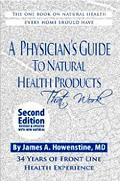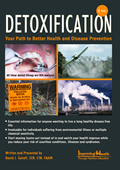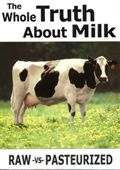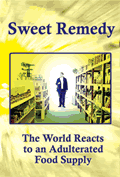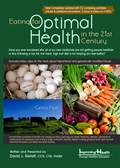VITAMIN D CAN HEAL TUBERCULOSIS?
By Dr. James
Howenstine, MD.
September 2, 2008
NewsWithViews.com
Tuberculosis remains a serious health problem around the world. In 2003 it was estimated that 1,700,000 persons died from tuberculosis. Many of these deaths occurred in persons suffering from HIV infections who had badly damaged immune systems.
The traditional drugs (isoniazide, streptomycin, rifampin, ethambutol, pyrazinamide, ethionamide, cycloserine) used to treat tuberculosis have been handicapped by the mycobacterium tuberculosis organisms’ ability to develop bacterial resistance. To compound this problem, many of the drugs used in tuberculosis therapy have significant side effects which commonly cause patients to drop out of treatment programs. Therapy for drug-resistant tuberculosis patients may take 18 to 24 months to complete and can cost $250,000 annually. Few countries can afford this expense. The term XDR-TB has been applied to patients who are resistant to first and second line tuberculosis drugs.
Many patients and physicians are terrified of tuberculosis because the disease is contagious. Unfortunately, there is a social stigma associated to tuberculosis which frequently causes an individual to lose nearly all their friends when word gets out that they have the disease. The incidence of tuberculosis is increased by poverty, overcrowding, alcoholism, HIV, and drug addiction.
Lack of vitamin D has always been found among the elderly and the housebound. Deficiency of vitamin D is related to higher rates of breast, ovary, colon, and prostate cancer; increased incidence of multiple sclerosis, progression of osteoarthritis, impairment of the immune response, high blood pressure, mood disorders including serious depression, Type 1 diabetes, and tuberculosis. Lack of vitamin D appears to be a prime factor in the rising incidence of depression along with a lack of omega 3 fatty acids. Patients with Parkinson’s Disease, multiple sclerosis, congestive heart failure, and Alzheimer’s Disease have all been found to have significant deficits of vitamin D.
New Ideas about Vitamin D
Influenza has long been considered to be an epidemic disease that appears in the middle of the winter. This happens to be the exact time when skin exposure to vitamin D production would be at the lowest levels in the whole year in the northern hemisphere. The possibility has been raised that perhaps the reason influenza is able to spread in an epidemic fashion in the winter was because natural immunity from vitamin D production was at its lowest level of the whole year in the winter, and not because a new strain of influenza always managed to develop during the winter season.
A second important aspect of vitamin D relates to decreased vitamin D production in persons who have dark pigmented skin when compared to lightly pigmented individuals Dr. Plotnikoff of the Univ. of Minnesota Medical School measured 25(OH)D [calcidiol] blood levels [1] in a chronic pain clinic. He discovered that 100% of Black, Hispanic, East African, and American Indians were vitamin D deficient. 93% of all patients were vitamin D deficient. Young women in their child-bearing years were at the greatest risk for not being diagnosed. Many of these patients had been having pain for years without ever having vitamin D levels checked. This suggests that chronic musculoskeletal pain is often caused by vitamin D deficiency.
The rate of prostate cancer in black males is 3 times higher than that of white males of equal age in the US. This may be in large part be explained by lower vitamin D levels in blacks.
Advanced Drug Resistant Tuberculosis
Tuberculosis
that has become resistant to antibiotic therapy presents a very
difficult situation for the clinician. The drugs used to treat this
condition are very toxic, quite expensive, and not universally
effective. Often patients refuse to remain on the therapy because of
serious side effects including hearing loss, dizziness, kidney damage
and liver injury.
Umckaloabo Therapy of Tuberculosis
Charles Stevens contracted a serious form of tuberculosis in 1897 at age 17 while residing in South Africa. He made a dramatic recovery [2] after being started on the herb umckaloabo from the root of the plant pelargonium reniforme. A second patient, 26 year old Morris Vaughn, was in Talgarth Sanitarium in Wales dying from bilateral tuberculosis. He frequently coughed up bloody sputum. After deciding to try umckaloabo he proceeded to recover and was able to obtain life insurance, marry, and teach chemistry until age 65. He died of heart failure at age 77.
Umckaloabo [3] was successfully used by a friend for a patient who had extra pulmonary tuberculosis in Chennai, India. She noticed that his fever, back pain, and blood sugar values improved after starting umckaloabo therapy, whereas there had been no change in his condition with either first or second line tuberculosis drugs. His disease was located in dorsal and lumbar spine, pleura, endobronchial, and hilar lymph nodes.
The knowledge that drug resistance has not interfered with the effectiveness of umckaloabo as a tuberculosis therapy after 101 years of usage is important.
This herb has been a safe, established therapy for bronchitis in children for more than fifty years in Germany. During this time, drug resistant tuberculosis has been a major worldwide problem.
Chemistry and Pharmacology
The bioactive ingredients of Preniforme (umckaloabo) are the tri- and tetra-oxygenated coumarins, gallic acid, and gallic acid methyl ester (polyphenols), as well as various flavinoids. It also has high levels of calcium and silica. Extracts of the root have been available in German pharmacies since 1985 without prescription and have found widespread use against infections of sinuses, throat, and respiratory tract. However, it has been shown that pelargonium sidoides [4] was even more effective in treating these problems.
The alcoholic extract of the has three primary effects:
1.
Anti-bacterial: The umckaloabo extract prevents bacteria from attaching
to cells in the mucous membranes.
2.
Anti-viral effect: Umckaloabo prevents viruses from attaching to the
mucous membrane cells and stimulates the body immune cells so that
bacteria and viruses are prevented from multiplying.
3.
Expectorant: The extract acts as an expectorant which allows the body
to expel contaminated mucous. This makes their replication more
difficult. With the properties of being bacteriostatic and immune
modulating Umckaloabo appears to a good alternative to treating
respiratory illnesses with antibiotics.
Normal Dosage:
Adults in the acute stage of infection should take 20 to 30 drops three times daily. Children 6 to 12 years old take 10 to 20 drops three times daily, while children from 6 months to 6 years take 5 to 10 drops daily.
Umckaloabo can be purchased in Germany and the US. This would be a sensible approach for the individual with advanced tuberculosis. The German source for Umckaloabo is Apoteke Hamburg (phone 01149 40335333). Speak with Doris Bruehl. The US source for umckaloabo is the African Red Tea Company (phone 323-658-7832). Umckaloabo is much safer, less expensive, and more effective than the conventional therapy for drug resistant tuberculosis.
The knowledge that drug resistance has not interfered with the effectiveness of umckaloabo as a tuberculosis therapy after 111 years of use is important.
Current Concepts about Vitamin D Dosage
The currently recommended daily dosage of 400 IU of vitamin D daily appears to be unreasonably low when we know that a light skinned individual makes 20,000 units [5] of vitamin D within 15 to 20 minutes of whole body exposure to the summer sun (before redness appears). This 20,000 IU of vitamin D is five times the amount of vitamin D considered capable of initiating toxic reactions by the Institute of Medicine, demonstrating that these guidelines are set far too low. Dark skinned individuals need 5 to 10 times longer in the sun to produce an equivalent amount of vitamin D as Caucasians, depending on the extent of their pigmentation.
Blood levels of calcidiol below 35 are found in 70% of U.S. citizens. Normal values are considered to be between 35 and 50 ng/ml. Life guards and outdoor persons living near the equator have values near 50 ng/ml. Toxicity from excess vitamin D does not occur from sunlight because ultraviolet light degrades vitamin D after 20,000 units have been produced, thus leading to a steady state with no toxicity.
New Ideas about the Effects of Vitamin D in Tuberculosis
Gujarati Asians living in London have a high prevalence of both vitamin D deficiency and tuberculosis. The persons with the lowest levels of vitamin D have the highest incidence of tuberculosis. Patients with no detectable value for vitamin D had a tenfold higher incidence of tuberculosis [6] than patients who had low levels of vitamin D. Tuberculosis itself does not appear to lower vitamin D levels.
Indonesian scientists [7] treated 70 tuberculosis patients with 10,000 units of vitamin D daily over a 9 month treatment program. All the patients made complete recoveries.
Persons of African descent are more susceptible to tuberculosis than Caucasians, with higher rates of infections and more severe cases. Sub-Saharan Africa has the world’s highest per-capita rates of tuberculosis and death from tuberculosis, with numbers nearly twice as high as any other region of the world.
Research from UCLA [8] and the Harvard School of Public Health revealed that vitamin D plays a key role in the production of a molecule called cathelicidin, which kills the mycobacterium tuberculosis organism. Vitamin D is produced when sunlight contacts the skin. Melanin pigment is abundant in dark skin and functions to reduce damage from ultraviolet light, and to decrease the amount of vitamin D formed in the skin.
Dr. Robert Modlin, lead investigator of the UCLA research team, stimulated gene receptors and then analyzed the resulting genetic responses. They found activation of the monocytes of vitamin D receptor (VDR) previously known to be associated with antimicrobial activity. A second genetic activation involved gene Cyp which causes an enzyme to convert vitamin D to its active form, 1-25-dihydroxyvitamin D3 (1-25 D3). The gene which encodes vitamin D receptors was expressed on the surface of macrophages. Activation of this receptor changed vitamin D from a passive to an active form. This newly activated vitamin D sliced a pre-existing protein in two. One of the resulting chunks of protein is the tubercle bacillus killer cathelicidin.
Serum produced by Afro-Americans produced 63% less cathelicidin than serum donated by whites. Adding a vitamin D precursor to the African-American serum increased cathelicidin production. Dean of the Harvard School of Public Health Barry Bloom found these results exciting because they suggested that a dietary supplement costing only pennies a day (vitamin D) might turn out to be able to reduce the frequency and severity of a deadly disease (tuberculosis).
|
Subscribe to the NewsWithViews Daily News Alerts! |
Vitamin D mediates a key human bacterial response against tuberculosis. This could explain why African-Americans are more vulnerable to tuberculosis as they have lower levels of vitamin D than Caucasians. This series of molecular events provides an explanation of why dark-pigmented patients are vulnerable to a more virulent form of tuberculosis.
The ready availability of inexpensive vitamin D and the herbal substance umckaloabo provide two new encouraging approaches to the therapy of tuberculosis.
Footnotes:
1,
Plotnikoff, GA and Quigley
BA Prevelence of Severe Hypovitaminosis D in patients with Persistent,
non specific Musculoskeletal Pain Mayo clinic proc. 2003;78: 1463-1470
2,
Newsome SWB Stevens’ cure:a secret remedy J
R. Soc. Med 2002, 95:463-7
3,
Harris, Ruth Personal communication supplied th information about the
improvement of extrapulmonary tuberculosis and how to obtain umckaloabo
in the USA and Germany.
4,
Phytophaemaka VII Oct 2001
5,
Vitamin D Council 9100 San Gregorio Road, Atascadero, Ca. 93422
6,
Lancet Vol 355 No. 9204 19 Feb. 2000
7,
Acta Med Indos. Jan-Mar 2006;36(1):3-5
8,
Liu
p.T. et al Toll-like receptor triggering of a vitamin D-mediated human
antimicrobial response Science February 23, 2006
© 2008 Dr. James Howenstine - All Rights Reserved


